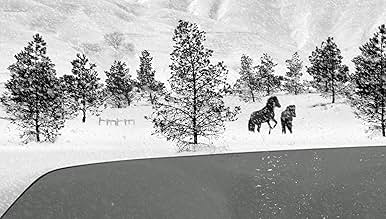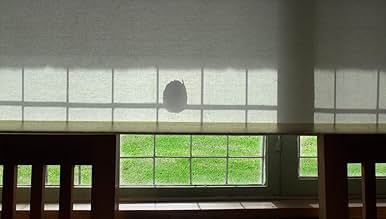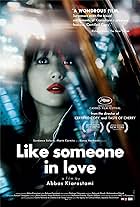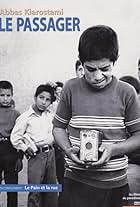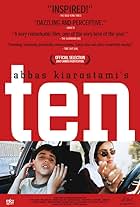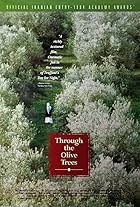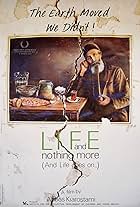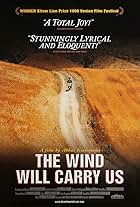IMDb RATING
6.8/10
2.3K
YOUR RATING
Collection of 24 short four-and-a-half minute films inspired by still images, including paintings and photographs.Collection of 24 short four-and-a-half minute films inspired by still images, including paintings and photographs.Collection of 24 short four-and-a-half minute films inspired by still images, including paintings and photographs.
- Director
- Star
- Awards
- 3 wins
Storyline
Did you know
- TriviaThis is Abbas Kiarostami's final work. It consists of 24 four-and-a-half-minute shorts shot by Kiarostami over a period of three years. The style has been described as fixed tableau with the use of blue screen.
- ConnectionsFeatured in Film: The Living Record of Our Memory (2021)
Featured review
'24 Frames' is one of those films that, in retrospect, is said to be a testament of a great director. There are enough arguments in favor of this categorization, including the final frame or scene in which we have on the screen the image of another screen in which the end of a classic film unfolds, including the magical 'The End'. And yet, even though Abbas Kiarostami was 76 years old when he filmed '24 Frames', I don't think that his intention was to create a testament film. This film radiates search and exploration of new ways of artistic expression. Far from being some 'last famous words', it seems more like a mid-career film of an artist in constant search. Returning to some of the tools he had used many decades before, at the beginning of his journey as an artist, the Iranian director combines them with the most advanced techniques of animation and digital image processing. A complete and versatile artist, Abbas Kiarostami has created in '24 Frames' a work of art that defies categorization. Personally, I confess that I have never been able to fully understand what the boundaries are between cinematography as art and video art. '24 Frames' seems to belong to both and many other fields of art. Watching it is a spiritual experience.
24 is a magic number in cinematography. 24 frames per second was the standard for classic projectors. The day has 24 hours and in the film time is one of the main subjects. Abbas Kiarostami constructed his work as a sequence of 24 sequences, each 4 and a half minutes long. Fixed, classic forms were one of the aesthetic obsessions of the creator who was, among many others, a creator of haikus. The first frame starts from a famous painting by Pieter Bruegel the Elder, 'Hunters in the Snow'. With the help of computer animation, portions of the painting wake up one by one. The soundtrack also comes to life placing the painting into its natural and period context. What was a snapshot of a single moment in time becomes a moment in a sequence of the passage of time. Similar patterns will be present in the following frames, but the starting points are photos created by the author. In its early versions '24 Frames' was supposed to be a sequence of reflections on art starting from famous paintings, as in the first frame, but due to copyright reasons Kiarostami had to change his strategy and used his own creations from albums of still photography, an artistic field that he had practiced at the beginning of his artistic journey.
'24 Frames' is a very different viewing experience than a traditional film. There is no plot, no human characters. Kiarostami, the filmmaker who excelled in creating heroes drawn from reality and who built psychologists full of credibility and humanity for them, places his human silhouettes - when they appear - on an equal level with those of animals, plants, landscape items. One can also interpret this attitude as an expression of the idea that we humans are only a part of an endless Universe, and not necessarily the center of it. The film seems more like a collection of philosophical essays or poems. Each of the frames has an aesthetic value in itself, but they also tell a lot about the connection between the creator and the artistic objects resulting from his imagination, about nature and its observation. The world in the frames is often seen through the geometry of a window, and in a few cases transparent but material screens or windows separate the viewer from the nature beyond. A nature that, let's not forget, is largely artificial, the result of the author's thinking in relation to the context of the still images that represent the starting points of each frame.
The viewer who dares to see '24 Frames' must know (and if he doesn't know, he will find out after the first frames) that this is not an ordinary entertainment film. The reward will come from the beauty and depth of cinematic thought and the boldness of the author's artistic exploration, which he becomes witness of. An unforgettable artistic experience.
24 is a magic number in cinematography. 24 frames per second was the standard for classic projectors. The day has 24 hours and in the film time is one of the main subjects. Abbas Kiarostami constructed his work as a sequence of 24 sequences, each 4 and a half minutes long. Fixed, classic forms were one of the aesthetic obsessions of the creator who was, among many others, a creator of haikus. The first frame starts from a famous painting by Pieter Bruegel the Elder, 'Hunters in the Snow'. With the help of computer animation, portions of the painting wake up one by one. The soundtrack also comes to life placing the painting into its natural and period context. What was a snapshot of a single moment in time becomes a moment in a sequence of the passage of time. Similar patterns will be present in the following frames, but the starting points are photos created by the author. In its early versions '24 Frames' was supposed to be a sequence of reflections on art starting from famous paintings, as in the first frame, but due to copyright reasons Kiarostami had to change his strategy and used his own creations from albums of still photography, an artistic field that he had practiced at the beginning of his artistic journey.
'24 Frames' is a very different viewing experience than a traditional film. There is no plot, no human characters. Kiarostami, the filmmaker who excelled in creating heroes drawn from reality and who built psychologists full of credibility and humanity for them, places his human silhouettes - when they appear - on an equal level with those of animals, plants, landscape items. One can also interpret this attitude as an expression of the idea that we humans are only a part of an endless Universe, and not necessarily the center of it. The film seems more like a collection of philosophical essays or poems. Each of the frames has an aesthetic value in itself, but they also tell a lot about the connection between the creator and the artistic objects resulting from his imagination, about nature and its observation. The world in the frames is often seen through the geometry of a window, and in a few cases transparent but material screens or windows separate the viewer from the nature beyond. A nature that, let's not forget, is largely artificial, the result of the author's thinking in relation to the context of the still images that represent the starting points of each frame.
The viewer who dares to see '24 Frames' must know (and if he doesn't know, he will find out after the first frames) that this is not an ordinary entertainment film. The reward will come from the beauty and depth of cinematic thought and the boldness of the author's artistic exploration, which he becomes witness of. An unforgettable artistic experience.
- How long is 24 Frames?Powered by Alexa
Details
Box office
- Gross US & Canada
- $34,482
- Opening weekend US & Canada
- $8,101
- Feb 4, 2018
- Gross worldwide
- $39,808
- Runtime1 hour 54 minutes
- Color
- Sound mix
- Aspect ratio
- 1.78 : 1
Contribute to this page
Suggest an edit or add missing content




